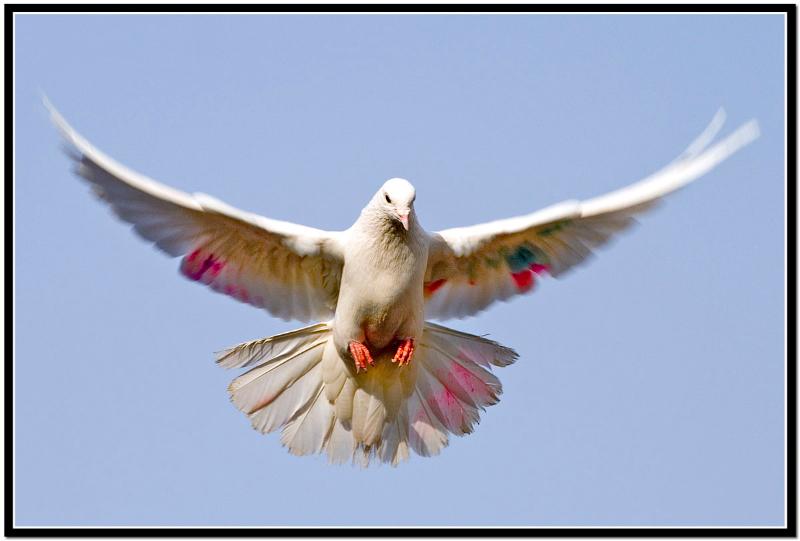Dear Integral Meditators,
In last week’s article I talked about balancing the development of the ego and the spirit, in this week’s article I take a practical look at non-doing, a powerful practice for developing your spiritual being that also has many benefits on the other levels of your being. It comes under the category of practices that are sometimes described as “effortless effort” or “the pathless path”. So, if making progress with no effort sounds like a good deal to you, read on 😉
I have to say in the history of my own life and practice, in my times of deepest discomfort and unhappiness in have found that this practice has offered me a perennially effective path out, or I suppose I should say it has offered me a perennial “non-path” out.
Yours in the spirit of non-doing,
Toby

What Does it Mean to Meditate on Non-Doing? (And why We should be interested in doing It)
Non-Doing: The What and the Why?
The practice of “non-doing” as a meditative “training” (or “non-training”) is most often overtly found in the paths of the Tao and of Zen, but if you look closely you can find analogous practices in all the major wisdom traditions of the world, and in particular those that are consciously teaching and embodying a non-dual path.
To practice non-doing means essentially to practice doing nothing, or no-thing on the physical and mental level and with gentle alertness rest our mind in our own primary awareness. That is to say the awareness that acts as the basis of our daily experience of doing and being, but is normally “hidden by the noise” so to speak. Originally the practice of non-doing was taught as a spiritual practice, that is a method for discovering our own True Nature or Spiritual Self, but the benefits of the practice actually extend to many levels of our being.
The Benefits and Purpose of Non-Doing:
Biological/Body level: On the body/biological level non-doing allows our body to relax deeply and regenerate its energy, as well as encouraging our internal organs and nervous system to come back into balance and harmony. It also sharpens our connection to our physical senses, as well as creating space for us to become more aware of our inner senses (subtle touch, sight, hearing etc…) and how they function. Of course there is always a certain section of the population who are interested in the development of their “psychic senses” or abilities. One essential ingredient to developing this aspect of inner consciousness development is to spend quality time watching and listening to each moment that arises whilst otherwise doing nothing.
Ego level: On an ego level the practice of non-doing enables us to regularly detach from the goals and activities of our daily life, and reconnect to ourselves as a human-being rather than a human-doing. It gives us the space to assess what is important and what is not, what needs to be held onto and what can be dropped, and creates the inner awareness to make these kinds of decisions consciously and non-compulsively. It also creates time for feeling deeply and allowing our psychological being to “catch up with itself” so to speak, and process whatever baggage we have been carrying around.
Soul Level: Non-doing creates an inner space where we can listen closely and become more aware of the deeper motivations of our soul and callings of our inner heart. It creates space for us to connect to our higher mind and the trans-rational and psychic faculties that go with it. It creates a space where our true depth of being and character can emerge.
Spiritual level: Non-doing is a practice that by explicitly cutting out all of our “doing” and activities encourages us to move into a direct communication the timeless, formless “always already” dimension of or being that was never born, that never dies, that is liberated from suffering and is our “true home”. Non-doing is a “non-exercise” that repeatedly creates an environment for us to recognize that our enlightened nature is, was and always will be something inseparable from our everyday daily awareness. Spiritual enlightenment is not something that we become, it is something that we recognize we are already, but had forgotten.
How to Practice the Meditation on Non-Doing
Step 1: Set aside a period of time, from 3minutes to an hour (whatever you have, and whatever feels appropriate). Short, regular periods of non-doing, say 3-5minutes 3-5 times a day can be really very effective. You can do it as a formal sitting meditation, or just sitting on the couch, having a cup of tea/coffee. Even slow activities like washing up or walking can be a space to practice non-doing. Even though literally you may in fact be doing the something the activity is simple enough to combine with non-doing practice.
Step 2: Within the time you have allotted yourself here are the “rules”:
- Be no-one: Forget about who you are, drop your “story”, let go of the continuous ego-conversation in your head about yourself. Don’t worry, it will pick itself up again just fine once you have finished.
- Do no-thing: Keep your physical and mental activities to a bare minimum. Empty your mind as fully as possible and don’t hold onto any objects that pass through your mental awareness. Physically sit still, or if you are engaging in a simple activity such as walking or doing the washing up, do the activity relatively slowly and with full awareness.
- Go no-where: Temporarily drop your worldly aspirations, your struggles, dilemmas, anxieties and conundrums. Drop also the things that you normally enjoy and or are attached to filling your mind with. Just be here and pay attention to that.
Relax, be and pay attention to that experience fully.
Step 3:Taking the experience of non-doing into the rest of your life.
As we engage repeatedly in the above two steps, one of the things we start to realize that the person who does not “do” in our life but always “is” can be present in our awareness all of the time, even when we are fully engaged in the busy-ness of our daily life. This awareness can become a rock around which we can build deep inner security, which paradoxically we may find enables us to take greater appropriate “risks” or make big changes in other areas of our life.
The nicest thing about it from a purely energetic point of view is that the practice of non-doing does not require a huge amount of effort, as by its very nature it is all about putting stuff down and doing less! But I guess that is the challenge for many of us; are we prepared to really commit to developing the wisdom of non-doing and make it a priority in our life?
Apart from the benefits mentioned above, one thing I find is that the clarity that comes from non-doing often saves time in the sense that we find more efficient ways of doing what needs to be done and less time chasing our own tail.
© Toby Ouvry 2012, you are welcome to use or share this article, but please cite Toby as the source and include reference to his website www.tobyouvry.com



 Stopping Painful Feelings Becoming Emotional Suffering
Stopping Painful Feelings Becoming Emotional Suffering

 Spiritual Fear, Spiritual Courage
Spiritual Fear, Spiritual Courage